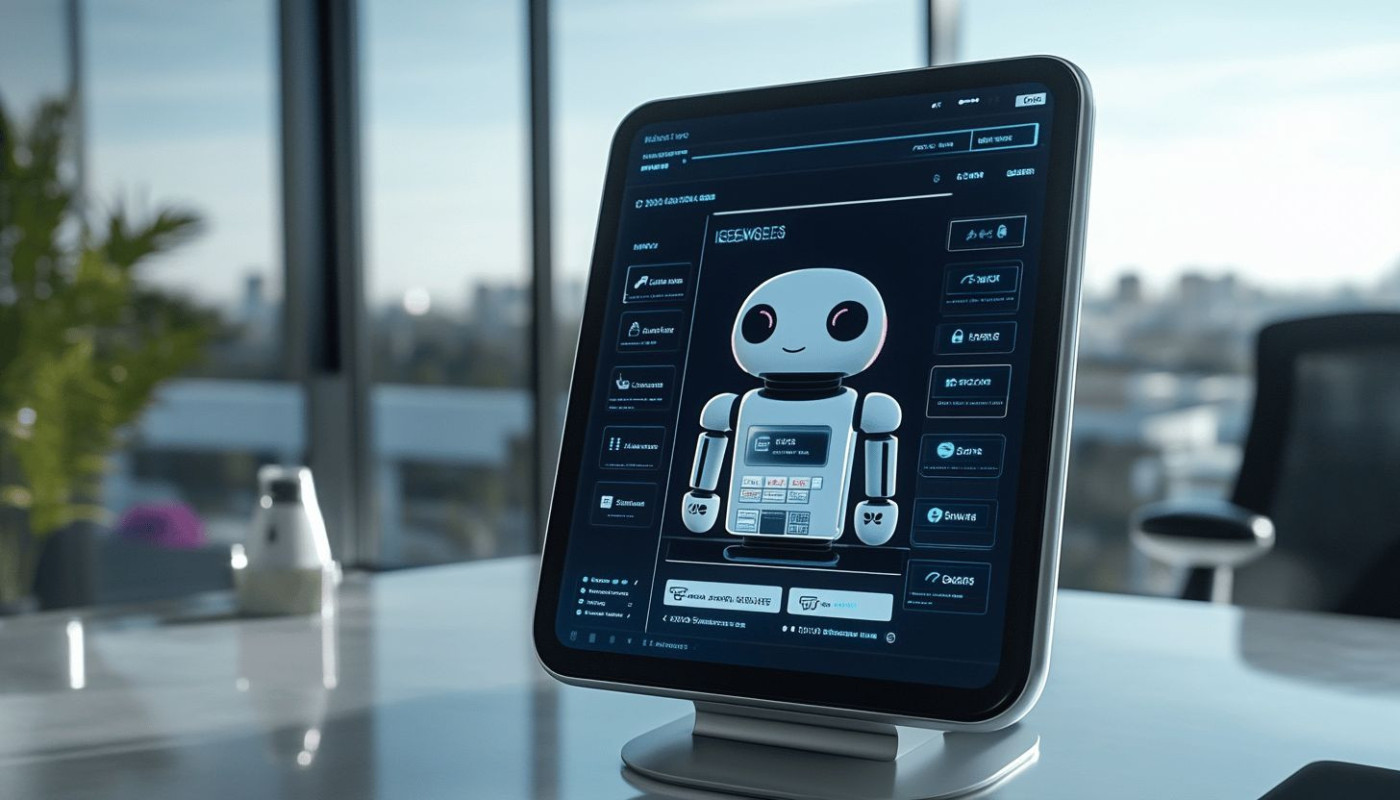Table of contents
In the digital age, customer service expectations have evolved beyond traditional channels. Small businesses now have the opportunity to meet these demands efficiently by implementing advanced automation tools. Discover how utilizing a chatbot builder can transform customer interactions, streamline operations, and elevate satisfaction, as the following paragraphs delve deeper into this innovative solution.
Understanding the role of chatbot builders in customer service
Chatbot builders serve as dynamic platforms enabling small businesses to design conversational AI specifically adapted to their customer service requirements. By harnessing natural language processing and machine learning, these platforms empower chatbots to interpret queries, learn from interactions, and respond with increasing accuracy over time. Seamless integration with customer relationship management systems allows for a more personalized experience, as chatbots can access customer histories, preferences, and order statuses in real time. Customizable user flows further equip businesses to guide conversations toward issue resolution or sales, mirroring the nuances of a live agent’s assistance while operating at scale. These technical capabilities collectively transform how support is delivered, paving the way for immediate, automated responses that dramatically reduce customer wait times and enable continuous availability, irrespective of business hours or staff limitations.
Small businesses often grapple with the challenge of scaling their support without significant investment in additional personnel, and chatbot builders offer an effective solution by automating routine tasks and inquiries. Deploying a chatbot involves minimal technical expertise, allowing even those with limited coding background to implement robust virtual assistants that handle everything from frequently asked questions to appointment bookings. This ease of deployment ensures chatbots can be rapidly updated or expanded as business needs evolve, offering both flexibility and future-proofing. As a notable example, Botnation AI extends a user-friendly, free nocode AI tool, enabling businesses to craft bespoke chatbots that enhance customer interactions without the hurdle of learning complex programming languages.
Key benefits for small businesses adopting automation
Deploying a chatbot builder empowers small businesses to dramatically reduce operational expenses, especially by automating repetitive queries that would otherwise require dedicated staff. Chatbots can operate around the clock, engaging customers instantly and consistently across platforms thanks to omnichannel integration. This ensures that whether a customer reaches out via social media, email, or the company website, the experience and information remain uniform. Such consistency is invaluable for shaping a trustworthy brand image and avoiding confusion arising from human error or variability in responses. By automating basic support and frequently asked questions, teams free up their time and resources to concentrate on more nuanced customer requests, strategic tasks, or relationship-building initiatives that require a human touch.
Advanced chatbot builders are equipped with sophisticated features like intent recognition and sentiment analysis, enabling them to understand not just what customers are asking, but also how they are feeling. This allows for more personalized and empathetic responses, which can boost customer satisfaction and loyalty. The platforms also gather data-driven insights from every interaction—such as peak inquiry times, trending issues, and customer sentiment patterns—providing actionable intelligence for process improvements and targeted training. With increased capacity to handle larger volumes of inquiries without sacrificing quality, small businesses can scale their support effortlessly, respond to surges in demand, and adapt to evolving customer expectations, all while maintaining streamlined operations.
Optimizing chatbot scripts for customer engagement
Crafting engaging chatbot scripts begins with thoughtful conversation design that mirrors natural, human-like interactions. Avoid robotic language and instead anticipate common customer questions, using clear and concise responses that guide users smoothly to their goals. Personalization plays a transformative role; by tapping into available user data, chatbots can greet customers by name, recall previous interactions, and tailor recommendations based on purchase history or preferences. Context-aware responses—such as acknowledging the time of day or ongoing promotions—create a more dynamic and satisfying experience. Artificial intelligence empowers chatbots to go beyond reactive support, actively offering suggestions or solutions before the customer articulates a need, such as reminding a shopper about an abandoned cart or recommending complementary products.
Effective chatbot scripts are never static; ongoing optimization is key to sustained engagement. Analyzing chat logs and user satisfaction metrics uncovers patterns in customer inquiries, revealing where scripts succeed or fall short. Implementing feedback loops—such as post-interaction ratings or open-ended comment fields—invites real customer insights that inform script enhancements. A/B testing different conversational flows or phrasing allows for data-driven decisions, highlighting which approaches resonate most with users. By continually refining scripts with performance analytics and customer feedback, businesses can ensure their chatbots remain responsive, intuitive, and capable of exceeding customer expectations.
Integrating chatbots with existing business tools
Connecting a chatbot builder to platforms like payment gateways, scheduling software, inventory management systems, and communication tools is typically achieved using application programming interfaces (APIs). This integration allows the chatbot to retrieve, update, and transmit data across systems in real time. For instance, when a customer inquires about a product's availability, the chatbot can instantly access inventory records and provide an accurate response. If a customer is ready to book an appointment or complete a purchase, the chatbot can interact directly with scheduling systems or payment processors, streamlining the workflow without human intervention. Such connectivity also enables chatbots to send notifications or confirmations through email or messaging apps, keeping customers informed at every step.
With these integrations, small businesses benefit from automated handling of repetitive or time-consuming tasks, freeing up staff to address more complex customer needs. Order processing becomes faster as payment and inventory updates happen simultaneously, reducing errors and delays. A unified interface powered by seamless connections means customers enjoy prompt, consistent service, whether they're placing an order, checking stock, or rescheduling an appointment. This cohesive approach not only enhances efficiency but also builds trust, as customers experience a smoother journey from inquiry to resolution. Adopting this strategy can differentiate a small business by delivering the responsiveness and reliability customers increasingly expect.
Measuring success and scaling customer service efforts
Small businesses implementing a chatbot builder should track specific key performance indicators to gauge the impact on customer service. Response time, which measures how quickly a chatbot addresses customer inquiries, directly influences satisfaction and retention. Monitoring the resolution rate reveals the percentage of issues the chatbot fully resolves without human intervention, providing insight into the tool’s effectiveness. Customer satisfaction score, often gathered through post-interaction surveys, helps evaluate the quality of support from a user’s perspective. Engagement metrics, such as interaction volume, session duration, and repeat usage, indicate how well the chatbot meets customer needs and adapts to changing expectations.
Access to comprehensive analytics dashboards and real-time reporting allows businesses to monitor these metrics continuously, identify patterns, and detect areas for improvement. Machine learning-driven insights can further enhance this process by highlighting gaps in the chatbot’s knowledge base and suggesting new automation opportunities. To ensure the chatbot continues to deliver value as the business grows, consider scaling efforts by integrating new languages, expanding into additional communication channels, and updating the chatbot’s responses based on feedback and analytical findings. Regularly refining the chatbot’s capabilities creates a responsive customer service environment that evolves alongside your business, maintaining a high standard of support without overburdening staff resources.
Similar articles

Streamlining Your Workflow With Efficient Strategies For Kubernetes Upgrade Deployment

Streamlining Your Business With Efficient Kubernetes Cluster Upgrades

How To Choose The Best Mobile Booster For Office Efficiency?

Best Practices For A Seamless Kubernetes Cluster Upgrade

How To Craft Your Ideal AI Companion For Daily Interaction?

Ensuring Business Continuity During A Kubernetes Cluster Upgrade

How Does An ESIM Simplify Your Mobile Data Needs While Traveling In Europe?

How Small Businesses Can Benefit From Using A Chatbot Builder

Exploring The Impact Of Jurisdiction Choice On Crypto Licensing Success

How To Choose The Right Chatbot Builder For Your Business Needs

How Choosing The Right Chatbot Builder Enhances Customer Service

Exploring The Impact Of UX Design On Chatbot Effectiveness

Advancing AI Prompt Design For Enhanced Creative Outputs

Exploring The Future Of Multi-channel Chatbots In Customer Service

The Evolution And Future Of Conversational AI In Customer Service

How To Build A Chatbot Without Coding Skills In Under 10 Minutes

Understanding The Emotional Stages Of Breakup And How To Navigate Them

How AI-driven Chat Platforms Revolutionize Customer Interactions

Exploring The Future: How Free AI Tools Are Shaping Industries

How Integrating Chatbots Can Transform Customer Service Efficiency

Enhancing Customer Engagement With Advanced QR Code Features

Step-by-step Guide To Diagnosing Connectivity Issues With Online AI Tools

